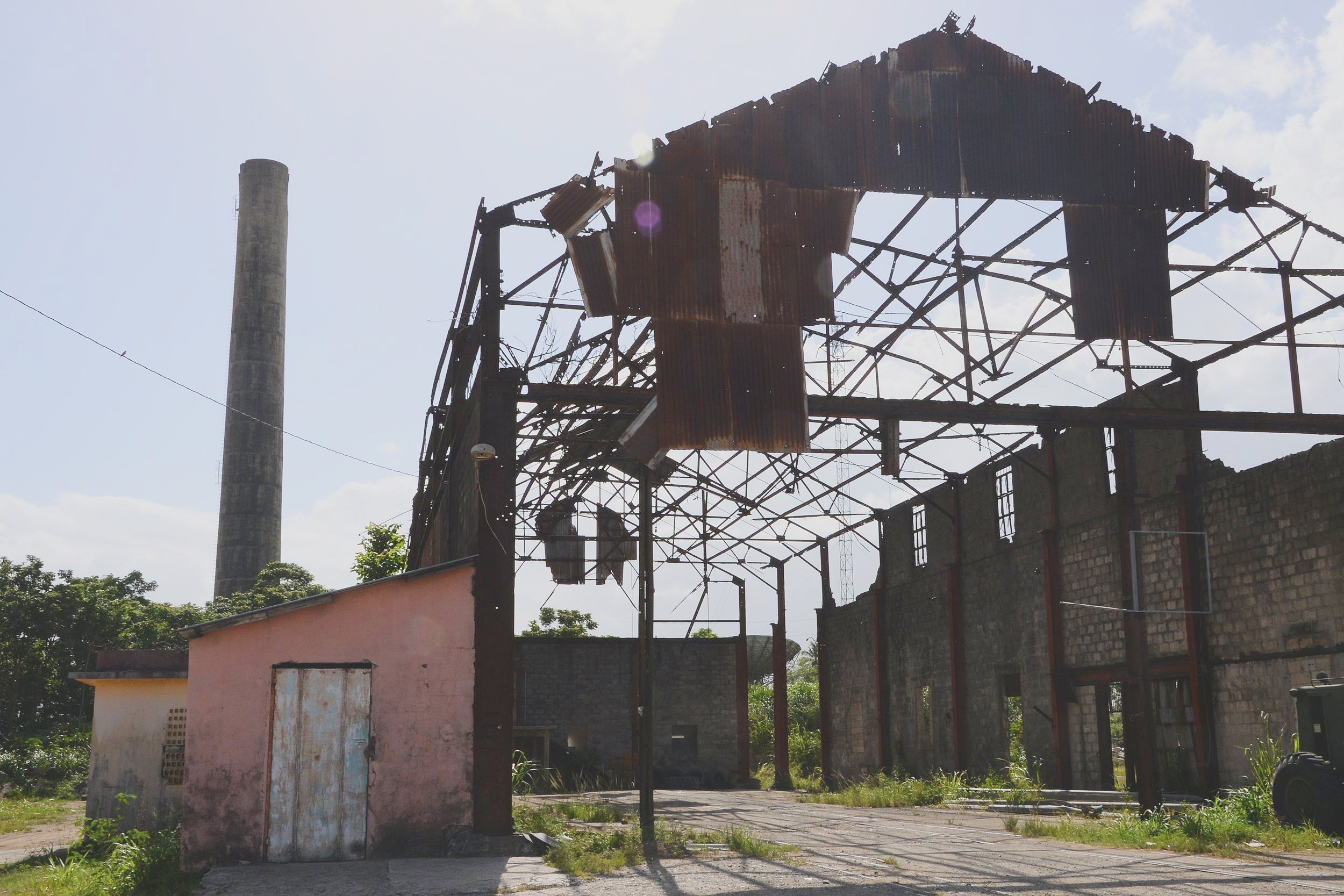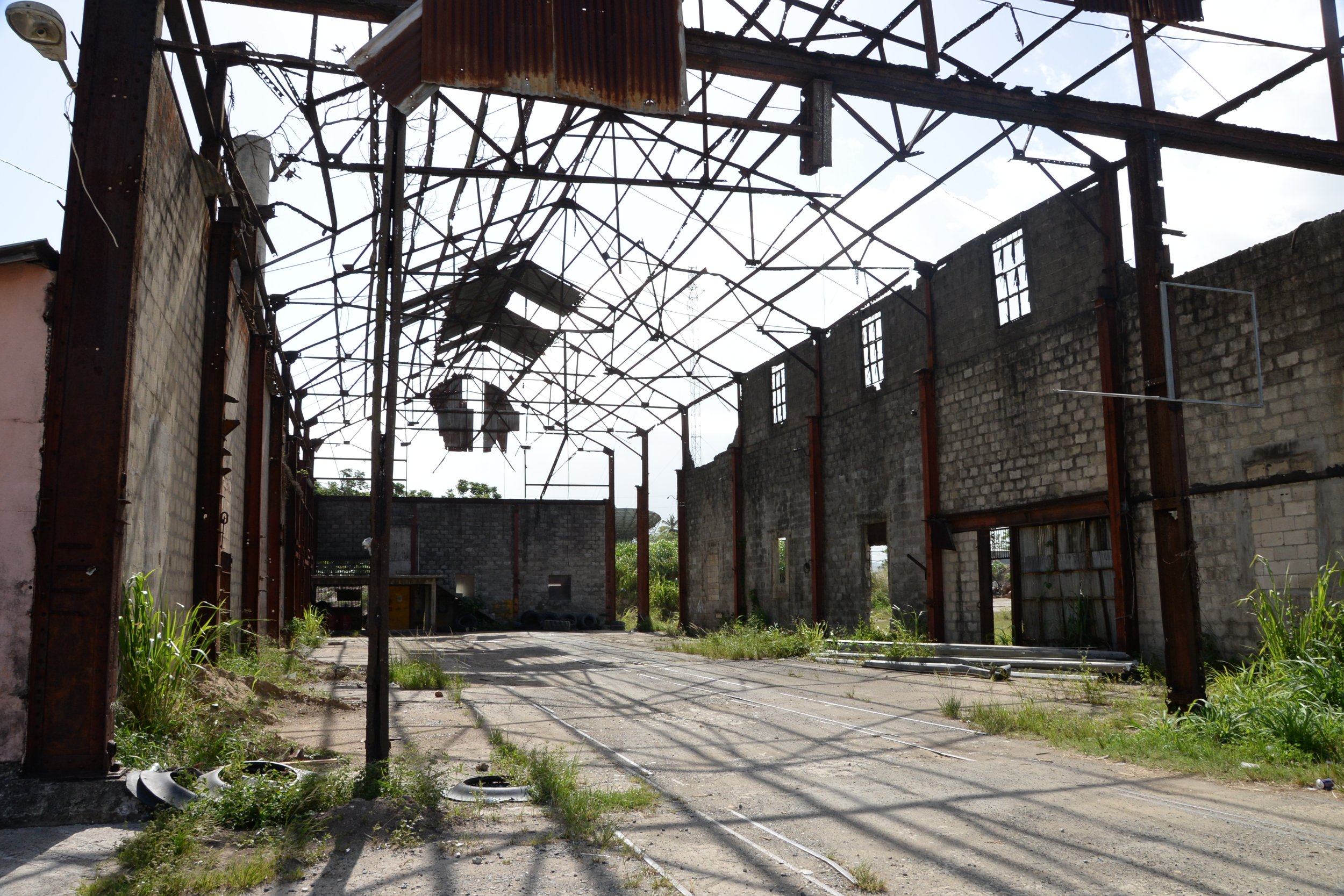
Central Juncos
Location: Juncos
Date Established: 1904
Date Ceased Operations: 1973
Annual Production Graph
Average Annual Production: 25,121 Tons
Best Production Year: 1949/43,605 Tons
Family Ownership: Mendez Dueño, Roig
Corporate Ownership: Juncos Central Company, United Porto Rican Sugar Co., Eastern Sugar Associates, Fajardo Sugar Co., C Brewer Porto Rico, Inc.
Hacienda La Solitaria was established during the first decade of the 19th Century by Baltazar Saldaña Muñoz ( -1824) and his son José Saldaña Pimentel (1790-1867), one of five major sugar factories in the Juncos-Gurabo region towards the end of that century, the others being Hacienda La Constancia of Agustín Collazo, Hacienda Rosalía of Jacinto Polanco Delgado, Hacienda Santa Ana of Elías Barbe and Hacienda La Mallorquina of Jaime Palou Bosh.
Upon José's death, the 324 acre Hacienda La Solitaria was transferred to the partnership "Hijos de Saldaña" comprised of his twelve children and his wife Juana Bautista de la Peña Márquez, none which were in or interested in the agricultural business. That being the case, the administration was handed to Agustín Dueño Martinez (1830-1898) whose second wife was Carlota Sampayo Saldaña, daughter of Isabel Saldaña Peña (1819-1898) and grandaughter of Saldaña Pimentel.
Between 1871 and 1874 Agustín completed the acquisition of all the sibling's intetrests becoming sole owner of the Hacienda at a cost of 110,430 pesos. He operated it until 1896 when, heavily in debt, he leased the hacienda to his nephew Manuel Mendez Dueño (1866-1928) for an eight year period. Mendez Dueño became sole owner of Hacienda La Solitaria on April 20, 1904 when he acquired all of its assets from the widow of his uncle Agustin Dueño Martinez and his five daughters for $30,000. In 1893 Mendez Dueño had entered into a five year lease of the 800 cuerdas Hacienda Rosalía from the widow of Jacinto Polanco Delgado ( -1890) which he bought in 1912. We believe but are not sure, that Hacienda Rosalia was adjacent and incorporated into Hacienda La Solitaria.
Prior to becoming sole owner in 1904, Manuel Mendez Dueño decided to transform Hacienda La Solitaria from a sugar factory or trapiche into a central sugar mill. To accomplish this conversion, on September 10, 1902 he entered into an agreement with Antonio Roig Torrellas to pursue the required financing. In 1904, Frenchman Julio Gay Del Santos, Antonio Roig Torrellas and Manuel Mendez Dueño joined forces and organized Roig, Gay & Cia. to engage in all aspects of the sugar industry, a partnership with Gay and Roig as general partners and Mendez Dueño as limited partner. Immediately they acquired Hacienda La Solitaria from Mendez Dueño and 15 adjacent farms totaling 1,496 acres. As the result of these transactions, Central Juncos was born. In the summer of 1905 Roig, Gay & Cia. changed its name to The Solitaria Land Company as owner of the land and the Juncos Central Co. as owner of the sugar mill.
The original stockholders of The Juncos Central Co. included foreign bankers Van Alan Harris and Waldemar Hepp, who also had ownership interest in the Porto Rico Sugar Co., owner of Central Pasto Viejo. During its formative years notable stockholders also included well known business and sugarmen from all throughout Puerto Rico among which were: Spanish immigrant Luis Rubert Catalá, Pedro Giusti, Eduardo Valladares, writer Abelardo de la Haba Trujillo (1865-1923) a Spanish immigrant who was the first president of La Casa De España, Eduardo Gonzalez, Gabriel Soler, Tomás Subirana, Carlos Armstrong, Jorge Bird Arias, Eduardo Ferrer, Agripino Roig, Adolfo Valdés and Carlos Toro Labarthe.
In 1922, then Central Juncos Administrator Carlos Toro Labarthe (1824-1923), who at one time was the Administrator of Central Manati in the Oriente Province of Cuba and had been appointed by the Governor of PR in 1913 as a member of the Irrigation Commission, was appointed Commissioner of Agriculture and Labor.
Between its organization in 1904 and 1926 when Central Juncos was sold to the United Porto Rican Sugar Co., Antonio Roig acquired 105 tracts of land totaling approximately 8,900 acres in his name and that of Solitaria Land Co. and accomplished a very good relationship between the sugar mill, of which he was a principal shareholder, and its "colonos" of which he was one. His success, which resulted in substantial growth and development for the sugar mill, was due in part to his decision to lease some of his own land to colonos rather than cultivating all of them himself.
Ownership of Central Juncos changed again in 1933 when United Porto Rican Sugar Co. was reorganized as the result of bankruptcy and all its assets were awarded by the US District Court in an auction sale to Eastern Sugar Associates, a Trust organized by the National City Bank of NY, its main creditor.
Eastern Sugar Associates operated all the five* sugar mills it acquired in 1934 until 1958 when it merged with the Fajardo Sugar Co. forming Fajardo Eastern Sugar Associates. In 1961, the operating** sugar mills owned by Fajardo Eastern Sugar Associates, Central Cayey, Central Juncos, Central Santa Juana, Central Canovanas and Central Fajardo were acquired by C. Brewer Puerto Rico, Inc., a subsidiary of C. Brewer & Co., a corporation that owned sugar mills in Hawaii.
In 1966 C. Brewer & Co. announced it was ceasing operations at its Puerto Rico subsidiary C. Brewer Puerto Rico, Inc. In 1967 all the assets of C. Brewer Puerto Rico, Inc. were acquired by the government of PR through the Sugar Corporation of PR.
The government's plan was to continue operating Central Fajardo and Central Juncos and dismantle and sell Central Santa Juana, Central Cayey and Central Canovanas. In 1975 the Sugar Corporation of PR dismantled Central Juncos and sold all of its machinery together with that of Cenral San Vicente in Honduras where they were installed at the new ACENSA Sugar Mill, today known as La Grecia, in Choluteca.
In one of the smoke stack pictures below, you can see the initials ESA which stand for Eastern Sugar Associates. The yellow structure pictured seems to be what was a sugar mill's office building, its Art Decco design is similar to the office building of nearby Santa Juana.
When we visited this site in 2014, the grounds where the sugar mill was located were being used by the Sanitation Department of the Juncos Municipal Government. The last six drone pictures in the gallery below, taken by Carlos Alemán in 2013, show the deterioration of the remains. Some, like the chimney, due to the effects of Hurricane Maria and some, like the administrative office building, due to abandonment.
__________________________________________
*Central Defensa ceased to operate in 1939
** Central Pasto Viejo was at the time in the process of being dismantled




